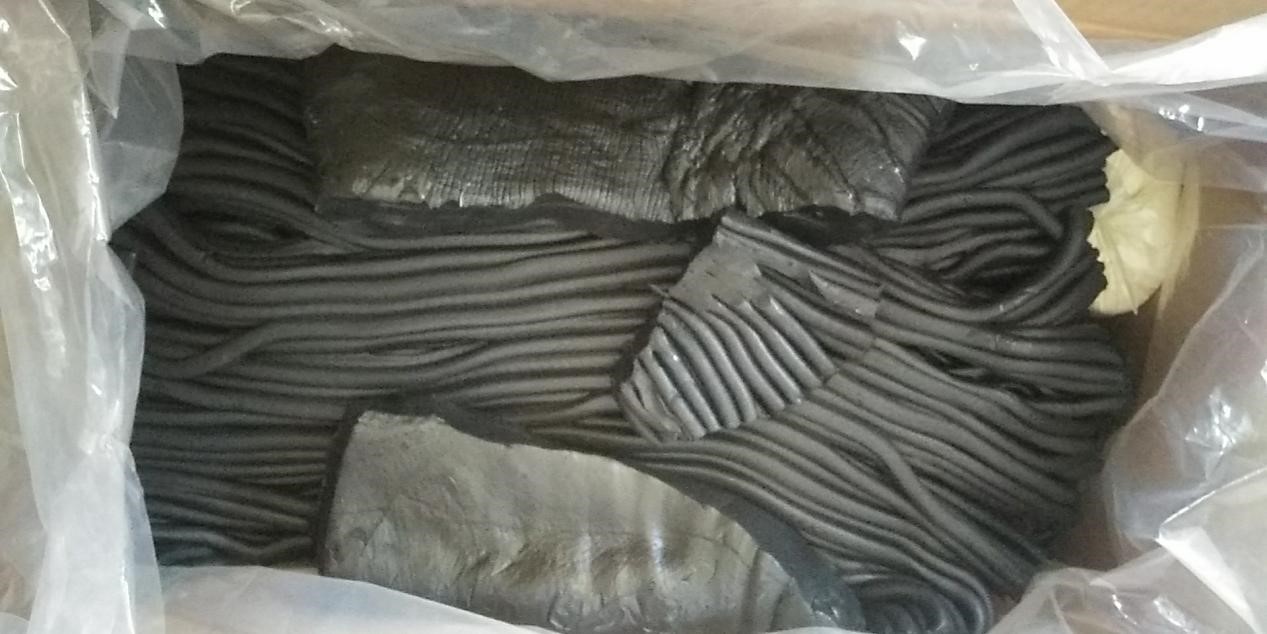Synthetic rubber is one of the three major synthetic materials and is widely used in various aspects of industry, national defense, transportation and daily life. High-performance and functional synthetic rubber is a key advanced basic material necessary for the development of the new era, and it is also an important strategic resource for the country.
Special synthetic rubber materials refer to rubber materials that are different from general rubber materials and have special properties such as high and low temperature resistance, aging resistance, ablation resistance, and chemical resistance, mainly hydrogenated nitrile rubber (HNBR), thermoplastic vulcanizate (TPV), Silicone rubber, fluorine rubber, fluorosilicone rubber, acrylate rubber, etc. Due to its special properties, special rubber materials have become the key materials necessary for the development of major national strategies and emerging fields such as aerospace, national defense and military industry, electronic information, energy, environment, and ocean.
1. Hydrogenated nitrile rubber (HNBR)
Hydrogenated nitrile rubber is a highly saturated rubber material obtained by selectively hydrogenating the butadiene units on the nitrile rubber chain for the purpose of improving the heat resistance and aging resistance of nitrile butadiene rubber (NBR). , its main feature is that it can be used for a long time at 150 ℃, and it can still maintain high physical and mechanical properties at high temperature, which can well meet the special requirements of high temperature resistance and chemical resistance of materials in automobile, aerospace, oil field and other fields. Requirements, more and more widely used, such as automotive oil seals, fuel system components, automotive transmission belts, drilling holding boxes and pistons for mud, printing and textile rubber rollers, aerospace seals, shock absorption materials, etc.
2. Thermoplastic Vulcanizate (TPV)
Thermoplastic vulcanizates, abbreviated as TPVs, are a special class of thermoplastic elastomers that are produced by “dynamic vulcanization” of immiscible blends of thermoplastics and elastomers, i.e. the selection of the elastomer phase during melt mixing with the thermoplastic Sexual cross-linking. Simultaneous vulcanization of the rubber phase in the presence of a crosslinking agent (possibly peroxides, diamines, sulfur accelerators, etc.) during melt blending with thermoplastics results in a dynamic vulcanizate continuous thermoplastic matrix composed of dispersed crosslinked rubber The particles in the phase, dynamic vulcanization leads to an increase in rubber viscosity, which promotes phase inversion and provides a multiphase morphology in TPV. TPV has both the performance similar to thermosetting rubber and the processing speed of thermoplastics, which are mainly manifested in high performance/price ratio, flexible design, light weight, wide operating temperature range, easy processing, product quality and dimensional stability And recyclable, widely used in automotive parts, power construction, seals and other fields.
3. Silicone rubber
Silicone rubber is a special kind of synthetic rubber which is made of linear polysiloxane mixed with reinforcing fillers, functional fillers and additives, and becomes a network-like elastomer after vulcanization under heating and pressure conditions. It has excellent high and low temperature resistance, weather resistance, ozone resistance, arc resistance, electrical insulation, moisture resistance, high air permeability and physiological inertia. It has a wide range of applications in modern industry, electronic and electrical, automotive, construction, medical, personal care and other fields, and has become an indispensable advanced high-performance material in aerospace, defense and military industry, intelligent manufacturing and other fields.
4. Fluorine rubber
Fluorine rubber refers to a fluorine-containing rubber material containing fluorine atoms on the carbon atoms of the main chain or side chains. Its special properties are determined by the structural characteristics of the fluorine atoms. Fluorine rubber can be used at 250°C for a long time, and the maximum service temperature can reach 300°C, while the limit service temperature of traditional EPDM and butyl rubber is only 150°C. In addition to high temperature resistance, fluororubber has excellent oil resistance, chemical resistance, acid and alkali resistance, and its comprehensive performance is the best among all rubber elastomer materials. It is mainly used for oil resistance of rockets, missiles, aircraft, ships, automobiles and other vehicles. Special-purpose fields such as sealing and oil-resistant pipelines are indispensable key materials for the national economy and national defense and military industries.
5. Acrylate rubber (ACM)
Acrylate rubber (ACM) is an elastomer obtained by copolymerization of acrylate as the main monomer. Its main chain is a saturated carbon chain, and its side groups are polar ester groups. Due to its special structure, it has many excellent characteristics, such as heat resistance, aging resistance, oil resistance, ozone resistance, UV resistance, etc., its mechanical properties and processing properties are better than fluororubber and silicone rubber, and its heat resistance, aging resistance and oil resistance are excellent. in nitrile rubber. ACM is widely used in various high-temperature and oil-resistant environments, and has become a sealing material developed and promoted by the automotive industry in recent years.
Post time: Sep-27-2022







